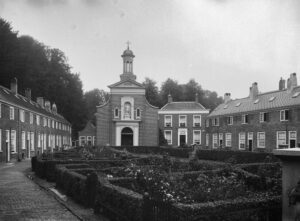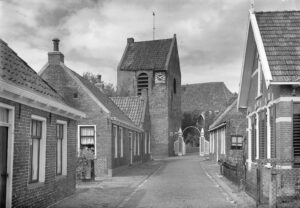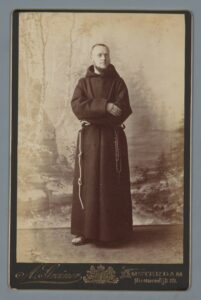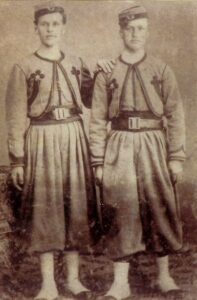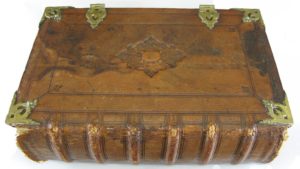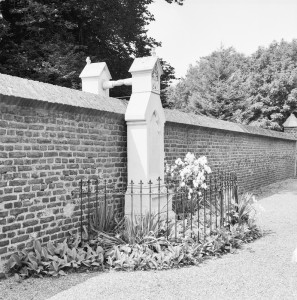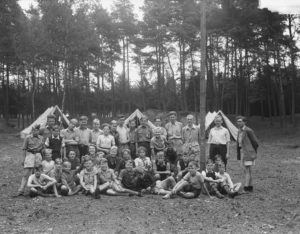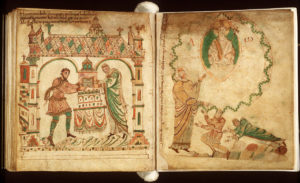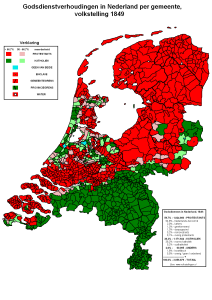A begijn is a beguine. Beguines were single women who lived in communities together. The beguine movement started in the 1100s and spread across Western Europe. Initially, beguines lived in houses together, but over time, they often lived in individual houses around a courtyard. Beguines were deeply religious women who often dedicated their lives to serving the community, like taking care of the ill or elderly. Unlike nuns, they did not have to renounce their personal possessions, but the … [Read more...]
Dutch Term – Nederlands Hervormd
Nederlands Hervormd means Dutch Reformed, a protestant religion. You may come across the term in population registers or church records. The Dutch Reformed church adopted that name in 1816. Before that, it was known as Nederduits Gereformeerd [Nederdutch Reformed]. There are many other protestant religions that split off from the main Dutch Reformed church, including Gereformeerd [Christian Reformed]. … [Read more...]
Dutch term – Monnik
A monnik is a monk. Monniken are mostly found in the Roman-Catholic parts of the Netherlands like Noord-Brabant or Limburg. Before the Reformation, they were found all over the country. In the Middle Ages, many cities had monasteries where monks lived. In some towns, the monasteries disappeared but the name can still be found in street names or field names. Nowadays, few men become monks, even among Roman-Catholics. … [Read more...]
Level 4 Checklist – Property ownership, military service, religion, criminal activity
A few months ago, I issued my Level-Up Challenge, challenging you to assess how complete your research is. By level 2, we know the names of our ancestors and where and when they were born, married and died and by level 3, we also have to know their occupations, places of residence, and their children and spouses. To reach level 4, we also need to know what property they owned, if they served in the military, what religion they were, and if they were involved in any criminal activities. In … [Read more...]
Dutch term – Zoeaaf
A zoeaaf is a zouave, a member of the infantry forces of the Papal states. In the mid 1800s, the Papal states were threatened by forces in Italy who wanted all the states to join under one nation. In 1860, pope Pius IX sent out a call to young unmarried Catholic men to join the infantry force and defend the papacy. The zouave papal infantry force existed from 1861 and 1870. The men volunteered for a period of two years, and some extended. In total, about 11,000 men enlisted with the … [Read more...]
Dutch term – Familiebijbel
A familiebijbel is a family bible. Some Dutch families recorded births, marriages, and deaths in their bibles. Familiebijbels were not as common in the Netherlands as they were in other parts of the world. Until the 1900s, a large part of the population was illiterate and only richer people were able to create their own records. You rarely see family bibles cited in Dutch genealogical publications. The records kept by the churches and civil registration are readily available, include the … [Read more...]
Dutch term – Gemengd huwelijk
A gemengd huwelijk is a mixed marriage. The term typically refers to two people with different religions, but is sometimes also used for two people of different racial backgrounds. Until recently, many churches would not perform a mixed marriage ceremony and required the other party to convert and promise to raise all their children in that church's faith. A civil marriage before the court was an alternative for couples who did not want to convert. Some couples chose to raise the boys in the … [Read more...]
Dutch term – Verzuiling
Verzuiling, literally: "pillarization," is the segregation of a society by religion or socio-economic background. By the late 1800s, the Dutch society become increasingly segragated. As a child of Roman Catholic parents, you would not just worship in the Catholic church, but you would also attend a Catholic school, sing in a Roman choir, and join a Catholic gymnastics club. When you grew up, you would vote for the Catholic party, joined the Catholic labor union, and later you would tune in … [Read more...]
Dutch term – Abdij
An abdij is an abbey. Especially during medieval times, abbeys were important land owners. Many of them owned large estates, farmed by tenants or serfs. In addition, they were often entitled to tithes of several properties, usually a percentage of the proceeds. The archives of these abbeys can sometimes give information about the earliest known history of the towns where they owned property, or about the tenants and serfs who worked for them. Famous abbeys in the Netherlands were located … [Read more...]
Quick tip – Protestant was not the Dominant Religion Everywhere
Many people think that the Netherlands was predominantly Protestant or Dutch Reformed, and that Catholics were a minority. While that may have been true for the country as a whole, there are several areas where almost everyone was Catholic. Areas that are predominantly Catholic include: Noord-Brabant Limburg Some parts of Overijssel (area around Oldenzaal) Some parts of Gelderland (area around Groenlo, area around Arnhem and Nijmegen) Some parts of Zeeland (eastern part of … [Read more...]
